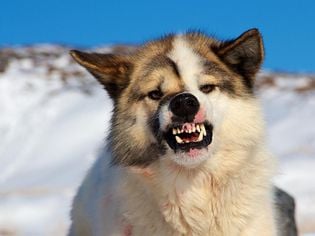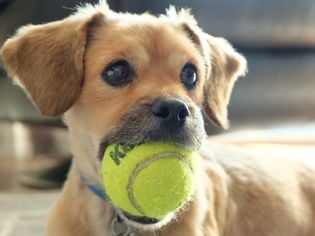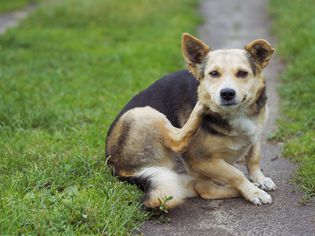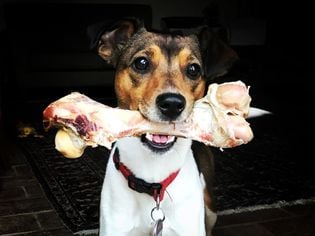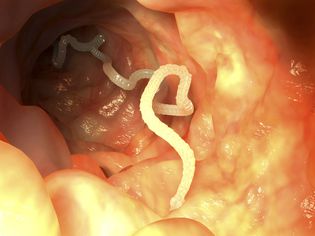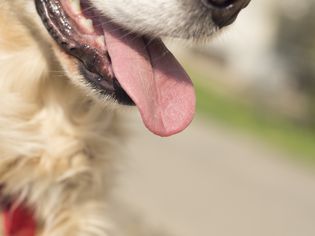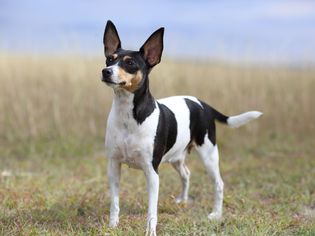The Norwich Terrier is an affectionate and curious dog named for its hometown in England. Standing at just 10 inches tall, the small-but-mighty Norwich Terrier is a cute and cuddly breed that also happens to be courageous and seemingly fearless when hunting vermin, like rats.
Breed Overview
GROUP: Terrier
WEIGHT: 12 pounds
HEIGHT: 10 inches
COAT: Hard, wiry, and straight
COAT COLOR: Red, wheaten, black and tan, or grizzle
LIFE SPAN: 12 to 15 years
TEMPERAMENT: Affectionate, bright, playful, lively, friendly
HYPOALLERGENIC: Yes
ORIGIN: England
Characteristics of the Norwich Terrier
If there's one thing the Norwich Terrier loves, it's human companionship. This petite pup thrives on love and attention from its owner or family and will pay you back with affection and loyalty for years to come. With a fearless attitude and a bit of sass, this fun-loving breed is a great option for all types of homes.
| Affection Level | High |
| Friendliness | Medium |
| Kid-Friendly | High |
| Pet-Friendly | Medium |
| Exercise Needs | Medium |
| Playfulness | High |
| Energy Level | Medium |
| Trainability | High |
| Intelligence | High |
| Tendency to Bark | High |
| Amount of Shedding | Medium |
History of the Norwich Terrier
The Norwich Terrier was originally bred as one of many varieties of terriers that were designed to help control Britain’s rodent population—only, in addition to their skills as being "ratter" dogs, the Norwich Terriers were also called upon to serve on foxhunts. They were also bred to be more sociable and affable than the typical terrier, which tends to be more independent. The Norwich's pricked-ear shape is also a distinguishing physical characteristic.
The Norwich Terrier is believed to be a cross between small Irish Terriers and other short-legged terrier breeds. Once known as Cantab Terriers, these hardy little dogs proved themselves useful on the hunt, in the stable yard, and at home where they made playful and fun-loving family pets. One of the smallest of the working terriers, the Norwich is both sturdy and stocky, which proved to be an asset when chasing game down tight passageways.
The Norwich Terrier has been famously associated with Cambridge University. In the 1870s and 1880s, ownership of these particular dogs became something of a fad among undergraduates. The students acquired the dogs from a livery stable on nearby Trumpington Street to serve as both cuddly pets as well as dorm-room ratters, and thus the breed also became known as "Trumpington Terriers." It's believed that one of these dogs, whose name was Rags, came into the possession of a stableyard owner in the town of Norwich. Rags was bred and is today considered the grandfather of what ultimately became the Norwich Terrier. A more recent "famous" Norwich Terrier was Winky, who appeared in the movie Best in Show and was played by a real-life show champion.
The breed’s American history didn't begin until in 1914, when a British man named Frank “Roughrider” Jones bred a dog named Willum from descendants of Rags. Willum was exported to Philadelphia and became the breed’s cornerstone in the United States. In the United States, the dogs actually came to be known as the Jones Terrier by breed devotees, even after the breed was formally recognized by the English and American kennel clubs as the Norwich Terrier in the 1920s.
There wasn't a lot of uniformity in the breed until 1923, when a breed standard was accepted by the English Kennel Club. In fact, Norwich and Norfolk terriers remained so closely related that the AKC didn't even recognize them as separate breeds until 1979. The name included both the drop-eared and prick-eared varieties until that time.
Norwich Terrier Care
Overall, the Norwich Terrier is a happy-go-lucky dog that's both loyal and affectionate. They're adaptable, inquisitive, and make ideal family companions. They are moderately friendly with other pets and should thus be trained and socialized properly in order to properly develop their friendly and outgoing personalities
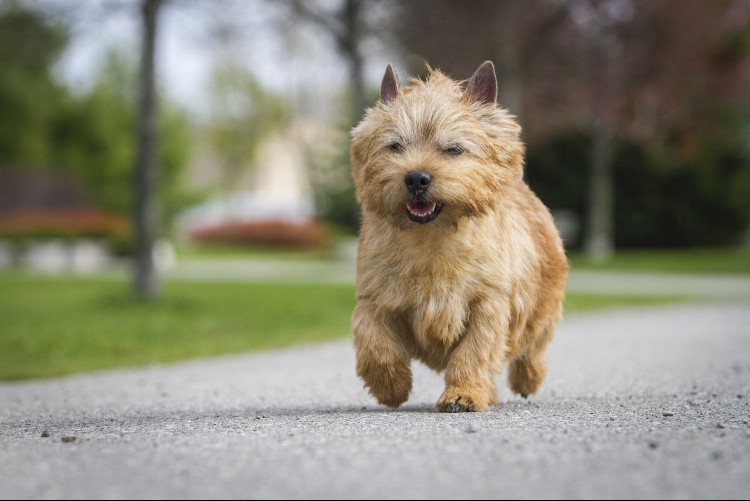
Exercise
Norwich Terriers require a fair amount of exercise for the sake of both their mental and physical well-being. It's important that they are provided with plenty of playtime in a fenced-in yard, and walks should always be done on a leash because it will be hard for them to deny their innate desire to chase small animals.
Grooming
Norwich Terriers have a double coat made up of a harsh (yet practically weatherproof) outer coat, while their soft undercoat insulates their tiny bodies from the heat and cold. Needless to say, this breed will require regular grooming. Wire coats that are cared for properly by hand-stripping will retain a beautiful shine and rich colors; the process requires removing older outer hairs and the excess undercoat so that new hair can come in. Because clipping or scissoring cuts the colored tips off, their coat's natural color will fade and the texture will also soften. Learning to hand-strip (or finding a groomer who is willing to do so) is an important consideration for potential Norwich Terrier owners.
Training
Because they're so spirited, Norwich Terriers are usually eager to please and respond well to training. These dogs are also successful in performance and companion events, including barn hunt, agility, earth dog, and obedience.
Common Health Problems
The Norwich Terrier is an overall healthy breed, but they have been associated with health conditions such as hip dysplasia, degenerative myelopathy, epilepsy, and upper airway syndrome, a respiratory condition that unfortunately remains poorly understood. This breed is also especially prone to developing plaque and tartar, so diligent dental care will be necessary.
Diet and Nutrition
The Norwich Terrier does well with high-quality commercially or home-prepared (under veterinary supervision) dog food. Fresh, clean water should be available at all times. As with all breeds, treats should be given in moderation and their diet should be controlled in order to avoid weight gain or obesity-related issues.
Where to Adopt or Buy a Norwich Terrier
Check your local animal shelters and rescue groups for Norwich Terriers that are in need of a forever home. National rescue organizations such as the Norwich Terrier Club of America can be a helpful source of information to help you find your new best friend. You can also scour the AKC Marketplace for reputable breeders in your area with Norwich Terrier puppies available.
Norwich Terrier Overview
Great family dogs
Useful rodent hunters
High trainability
Tend to shed
Require regular grooming
More Dog Breeds and Further Research
Be sure to do your homework when choosing a dog breed. Talk to other Norwich Terrier owners, reputable breeders, and rescue groups to learn more about this particular breed and its care.
If you’re interested in similar breeds, check out:
- Silky Terrier Breed Profile
- Australian Terrier Breed Profile
- Dandie Dinmont Terrier Breed Profile
There’s a whole world of potential dog breeds out there—with a little research, you can find the right one to bring home!
- Are Norwich Terriers aggressive?
Norwich Terriers are well-known for their friendly nature and are rarely thought of as an aggressive breed. They are not particularly territorial and will gladly welcome in new strangers, both human and animal alike.
Are Norwich Terriers good apartment dogs?Due to their petite size, Norwich Terriers can be very suited to apartment or small space living. That being said, they are not a lazy breed—even if you live in a small space, it's important to ensure they get daily exercise, whether that be a walk down the block or a trip to the dog park.
Are Norwich Terriers good family dogs?Yes—Norwich Terriers are considered an excellent option for families, even those with young children. The breed is considered playful and kind and will get along with kids of all ages and other pets, including cats in most instances.

